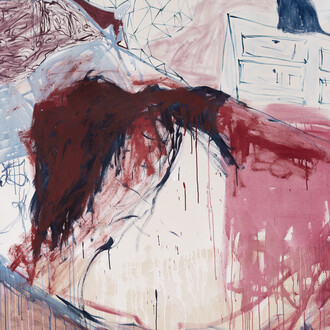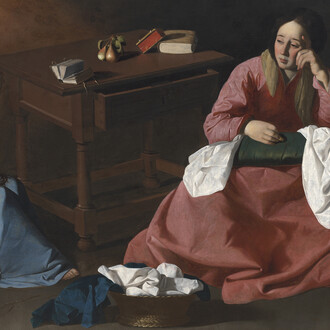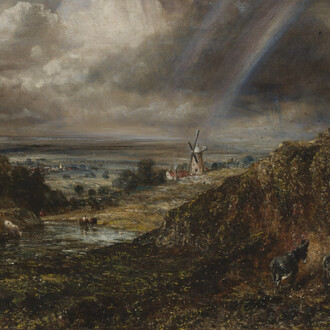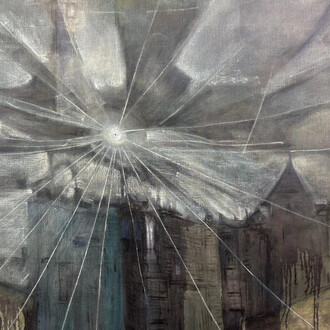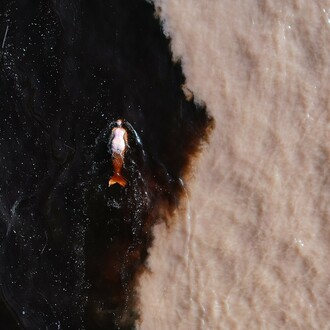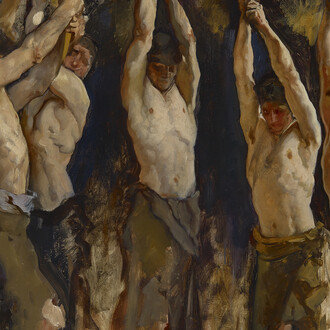For Any way up, Andy Harper’s (b. 1971, UK) fourth solo exhibition at the gallery, the artist presents a series of new circular paintings that emphasise the cyclical, rhythmic, and ever-shifting qualities that have long been central to his practice. Harper’s enduring interest in creating imagined worlds of unruly, elaborate vegetation-like formations is encapsulated or rather released within the circular frame.
Following an earlier presentation at the Brussels gallery that focused exclusively on works from the Radial symmetry series, the London exhibition broadens the scope and handling of Harper’s circular format to become an even more natural vessel for his unremitting brushwork. Abstraction alternates with more recognisably organic imagery, the marks clustering into forms that recall leaves, seaweed, feathers, stems or cellular structures.
Harper’s turn to the circular format developed in a practical, almost inevitable way. While working on earlier explorations of symmetrical compositions, he would hang rectangular canvases from a single central screw, rotating them as he painted. The twisting of the surface, combined with the sweep of his arm, produced vortex-like structures that were already pressing against the limits of the rectangle. The circle transpired to be less of a departure than a logical solution.
While the current works are formally less symmetrical, they retain echoes of those earlier Radial symmetry series, such as the presence of a central point. In Exotic matter, brushstrokes intervene and curl, originating and expanding from the centre, while in Coming up for air, the centre is composed in brighter tones and calmer movements that intensify and darken toward the outer rim. Another reference is compositional balance. As Harper notes, the round paintings can be hung “any way up”, which not only mirrors their rotational origin in the studio but also reveals their overall equilibrium, rendering each painting well-balanced no matter in which orientation it rests.
The sense of motion and movement is key to the new body of work. In the more naturalistic works, Harper’s forms appear caught mid-sway, like underwater plants shifting in the currents or grass moving in a breeze. The circular format heightens this sensation, the eye tracing the ceaseless circulation. In the more abstract canvases, such as Strobe flower, the compositions appear to rotate faster, as if the details have spun into ribbons, arcs or bubbles of colour and ultimately dissolve.
Rhythm is another crucial element in Harper’s practice and new series. A former drummer, he brings a percussive energy to the painting’s surface: repetition, syncopation, layering, and variation. The round support, like a drum’s surface, becomes a resonant space for his improvisations, vibrating with pulses of growth, collapse and renewal.









